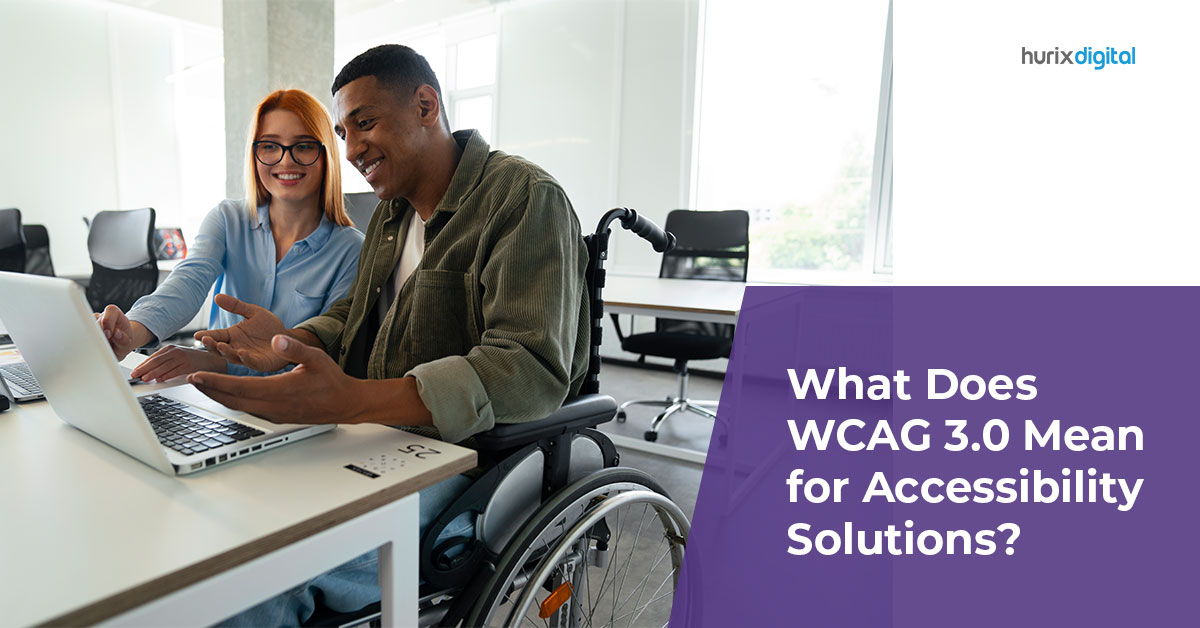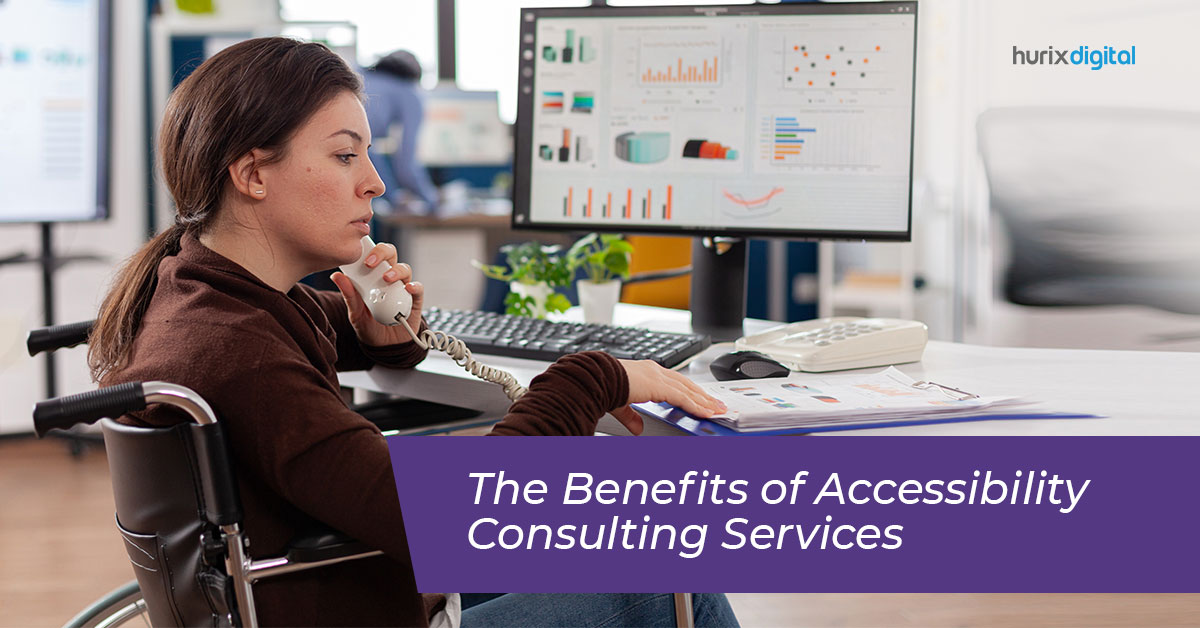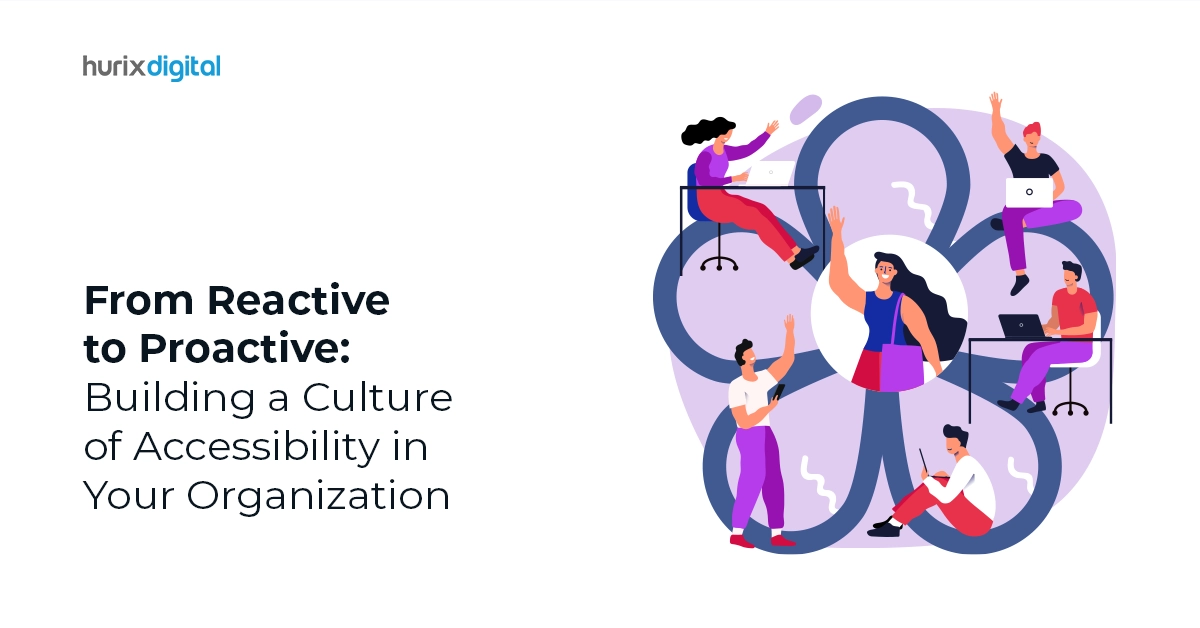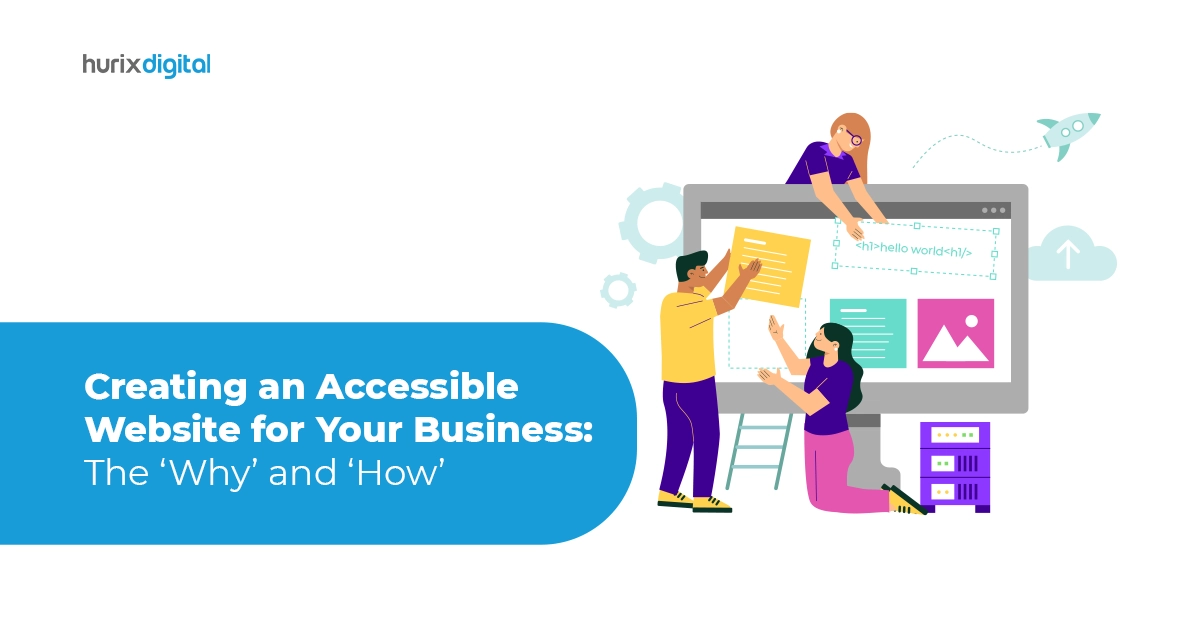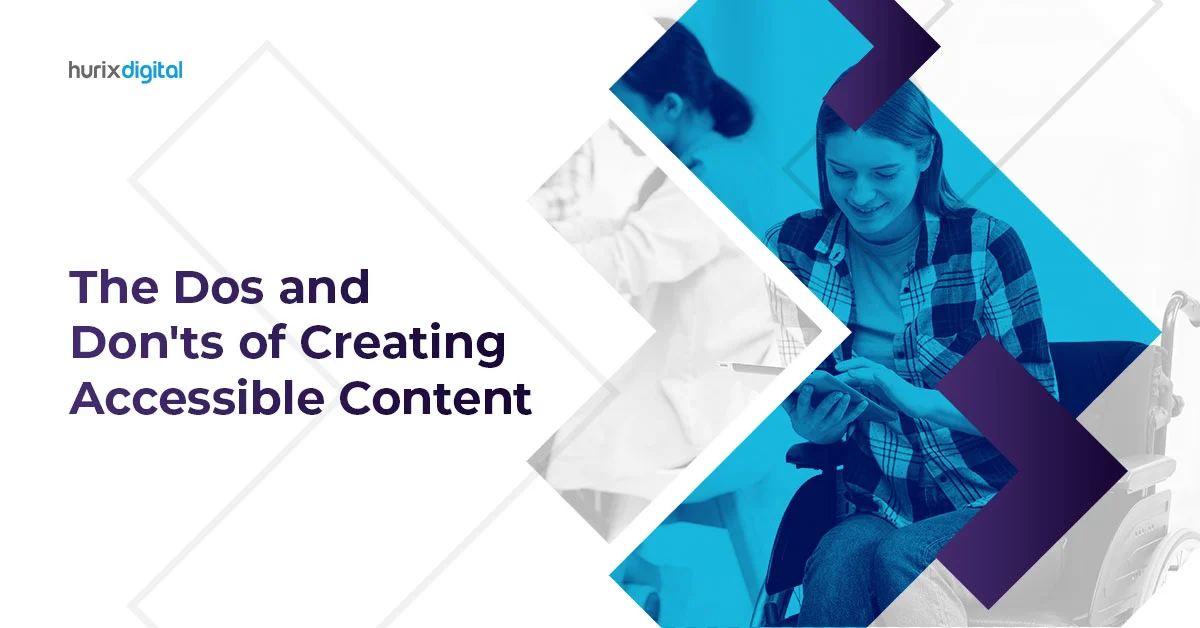
The Dos and Don’ts of Creating Accessible Content
Summary
This blog explores the dos and don’ts of creating accessible content to enhance digital accessibility for organizations. It provides tips on font size, alt text, captions, avoiding jargon, and testing content. The goal is to ensure content is available to all users, including those with disabilities.
As more organizations move their operations online, it’s becoming increasingly important to ensure that their digital content is made accessible to all users, including those with disabilities.
However, many organizations are not aware of the best practices and guidelines for creating accessibility solutions.
In this blog, we will explore the dos and don’ts of creating accessible content, providing valuable tips and insights for organizations looking to enhance their digital accessibility and ensure that their content is available to all.
Table of Contents:
- Top 8 Do’s of Creating Accessible Content
- Top 7 Don’ts of Creating Accessible Content
- Steer Clear of PDFs and Other Files that Require Special Software to View
- Skip out On Making Images and Videos Too Long
- Don’t Forget About Alt Text
- Avoid Using Complex Language and Jargon
- Steer Clear of Using Too Many Distractions
- Don’t Embed Videos or Audio Files
- Don’t Ignore Web Page Organization and Structure
- Why Is It Important to Create Content that Is Accessible to All?
- The End Note
Top 8 Do’s of Creating Accessible Content
Creating content that is accessible to everyone is becoming increasingly important. Below are the top eight things to do to create accessibility solutions that are comprehensible to the widest possible audience.
1. Understand the Importance of Designing for Accessibility
It’s essential to understand why designing for accessibility is important. Also, what are the accessibility requirements for websites?
People with disabilities and others with limited resources should be able to access your content easily.
2. Use Clear and Concise Language
Make sure your text can easily be understood and absorbed by all users, regardless of their level of literacy or language proficiency.
Furthermore, use a simple, logical page layout to make it easier for users to navigate and absorb the content.
3. Choose an Appropriate Font Size
Select fonts that are easy to read and allow for easy scaling. The text should be at least a 12-point font size as below so that it becomes hard for some audiences to access the content.
However, you can use a 9-point font size for footnotes.
4. Add Alternative Text to Images
Adding alternative text to images and graphics allows people with visual impairments to access the information in the image.
Thus, make sure to add alt text to the images to create highly accessible content.
5. Make Sure Color Isn’t the Only Way to Convey Information
Certain colors can be difficult for people with color blindness to distinguish. Always include a text option to receive the same message.
Web accessibility tools can help you understand these shortcomings when creating content.
6. Use Descriptive Links
Make sure the links you use make sense and that they provide a clear indication of where they lead.
For example, avoid using generic phrases like “click here”; provide more meaningful and descriptive link text instead.
7. Add Captions to Videos
Captions are essential for ensuring that deaf and hard-of-hearing people can watch and understand your video content. Furthermore, it is also a very helpful resource for non-native English speakers to better understand the content.
8. Test Your Content
Once you’ve created your content, make sure to test it to make sure it meets accessibility standards. Website accessibility testing will ensure that everyone can access and enjoy your content.
Creating accessible content is essential for providing the best user experience for all your users, and these 9 Do’s of creating accessible content will help you do just that.
Also Read: Accessible Content Creation: Best Practices for All Types of Media
Top 7 Don’ts of Creating Accessible Content
Creating content that is accessible to everyone should be a main priority, no matter the medium or topic. This means taking into account those who are visually impaired or have limited resources.
To ensure accessibility for all, here are seven things to avoid when creating content.
1. Steer Clear of PDFs and Other Files that Require Special Software to View
These can be difficult to access for those who lack certain programs on their computers or devices. Instead, opt for HTML or text formats that are accessible to all.
2. Skip out On Making Images and Videos Too Long
Long videos or images can be difficult for some to take in and can be overwhelming for those who have short attention spans. Instead, opt for infographics or short videos with captions.
3. Don’t Forget About Alt Text
Adding alternative text to images allows screen readers and other devices to be able to access the content of an image and relay it back to those using them.
4. Avoid Using Complex Language and Jargon
Make sure to keep the language of your content simple and easy to understand, avoiding any jargon or difficult terms when you can.
5. Steer Clear of Using Too Many Distractions
Things like large text, moving images, and cluttered backgrounds can be distracting and hard to understand.
Thus avoid using too many of them all at once. Use a simple text format with a few images.
6. Don’t Embed Videos or Audio Files
Audio and video files can be difficult to view for those with limited resources or low bandwidth.
Instead, include a link to the file so the viewer can choose when and how to access the content.
7. Don’t Ignore Web Page Organization and Structure
Web page structure and organization are important for all users to understand your content, but users with disabilities need to access and utilize your content.
Thus, do not omit headings and other structural elements that aid navigation and comprehension.
Also Read: Accessible Content Creation Tools: Streamlining the Born-Accessible Process
Why Is It Important to Create Content that Is Accessible to All?
- Legal compliance: Organizations are legally required compliance in accessibility standards in many countries, including the United States, Canada, and the European Union. Failure to do so can result in fines, legal action, and damage to the reputation of the organization.
- Social responsibility: Creating accessible content is an important social responsibility for organizations. It ensures that people with disabilities have equal access to information and services, which can help to reduce social barriers and promote inclusivity.
- Increased audience reach: By creating accessible content, organizations can reach a larger audience, including people with disabilities who may have been excluded in the past. This can lead to increased sales, brand recognition, and customer loyalty.
- Improved user experience: Accessibility features can benefit all users, not just those with disabilities. For example, captions can be helpful for people learning a new language or in a noisy environment.
- Reputation and brand image: Organizations that prioritize accessibility are viewed as more inclusive, ethical, and socially responsible. This can enhance the organization’s reputation and brand image, leading to increased customer loyalty and support.
The End Note
Creating accessible content is crucial for a successful business, and following these don’ts will help you create content that is accessible to all. These top Dos and Don’ts will help you create that is accessible to a wider audience.
Hurix Digital is a digital learning solutions company that specializes in providing web accessibility solutions for organizations. With a strong focus on accessibility, Hurix Digital provides a range of services, including website accessibility testing, accessibility audits, and accessibility consulting.
Our web accessibility solutions are designed to help organizations promote inclusivity and enhance their digital presence.
Reach out to learn more.

Vice President – Digital Content Transformation. He is PMP, CSM, and CPACC certified and has 20+ years of experience in Project Management, Delivery Management, and managing the Offshore Development Centre (ODC).
